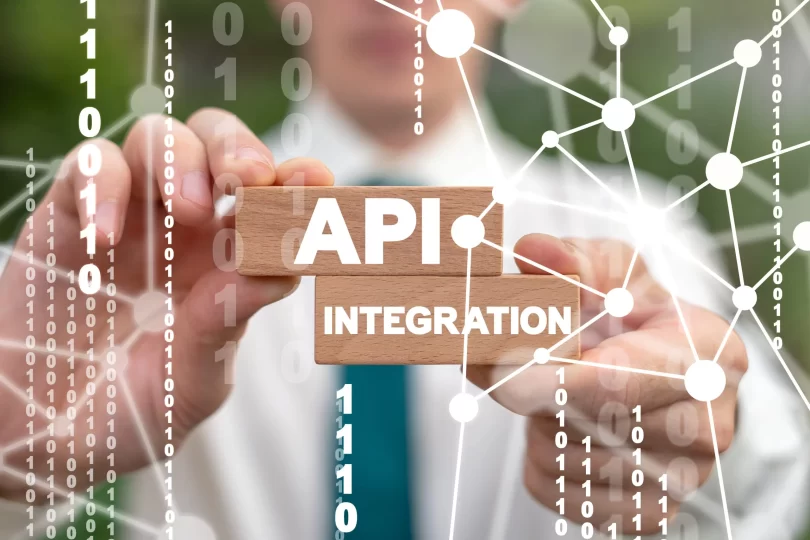Data-driven recruitment offers an opportunity to streamline the hiring process. By analyzing recruitment metrics like time-to-hire and cost-per-hire, companies can identify areas for improvement.
But, collecting data is only one part of the equation. Determining how to act on the information gathered effectively is also crucial. That’s where API integration comes in.
Real-time Data Synchronization
Table of Contents
Data synchronization streamlines the process of moving data between applications, removing the need for employees to input information in each app manually. This saves time, reduces errors, and enables teams to operate more effectively. It allows sales and finance to better collaborate on managing deals, empowers product and customer support teams to resolve issues faster, etc.
However, the effectiveness of these integrations depends on several factors. First and foremost, it’s essential to identify the right metrics to track. This can be challenging, as there is often a lot of data to collect. This is particularly true when analyzing recruiting data, as it can include everything from candidate survey feedback to Google Analytics.
Once these metrics are in place, it’s essential to prioritize improvement efforts based on the most pressing recruitment problems. For instance, if there is a problem with the speed of new hires, it’s best to focus on improving sourcing and interviewing processes. Similarly, if job offer acceptance rates are low, it may be best to focus on increasing candidate communication and engagement. By leveraging the power of data-driven hiring, companies can dramatically improve their recruitment outcomes. This allows them to make more informed and objective decisions when selecting candidates. This increases the likelihood of making a good hire and decreases hiring costs by eliminating waste, churn, and inefficiencies.
Automated Onboarding
Automated onboarding reduces HR personnel’s time preparing documents, verifying new hires’ identities, and communicating with them. It also makes it easier for HR departments to track and monitor document statuses to ensure that onboarding is completed within a set timeline.
This automation also helps to increase engagement with new hires. When HR teams know paperwork and administrative tasks, they can ensure that new hires feel welcomed into their company and are given all the information they need to succeed in their roles.
It also allows HR professionals to focus on the interpersonal aspects of onboarding, such as welcoming new hires to the office and introducing them to their team members. This type of attention can make a difference in a new hire’s comfort level, ultimately impacting their long-term job satisfaction and productivity.
Employment data API integration, like those offered by Finch, can also improve hiring quality by providing a more accurate picture of how each stage of the recruitment process is performing. This allows HR to identify areas of improvement and conduct necessary fixes. For example, the process takes too long to fill vacant positions. In that case, HR can explore ways to expedite the recruiting cycle by diversifying their sourcing methods, using software to streamline interview scheduling, and creating more attractive job offers.
Streamlined Reporting
With robust analytics and reporting capabilities, recruitment teams can make better decisions, increase efficiency, and reduce costs. Recruiting data is often siloed within HR systems and point solution add-ons, which can result in a lack of visibility into key metrics.
Recruiting recruiters can use an API integration to streamline data collection and report generation to provide more visibility into crucial recruiting metrics and trends. This allows recruiters to make data-backed decisions, eliminate inefficient hiring processes, and uncover hidden or unforeseen issues that can negatively impact the quality of hire.
For example, one of the primary goals of a data-driven hiring approach is to improve time-to-hire. By analyzing recruitment data and tracking progress throughout the process, recruiters can confidently predict how long it will take to fill a role and identify potential delays. This helps expedite the hiring cycle, reducing costs and improving candidate experience.
An API integration also makes monitoring job market trends and adjusting recruiting strategies easy. For example, leveraging an API to access data on competitive salaries can enable recruiters to make more informed offers to candidates. Additionally, an API can analyze candidate feedback and reviews to understand job seekers’ pain points and preferences. This can inform how a recruitment team designs its online application and interview processes.
Increased Efficiency
As the hiring process becomes more data-driven, the teams collecting this information must understand how to utilize it. Data analysis can reveal areas for improvement, but determining actionable steps is up to the recruiters themselves.
For example, if an analysis indicates a high number of rejected candidates, it can be helpful to identify the source of these rejections. It may result from unconscious bias during the screening process or an ineffective job ad. Likewise, if your time-to-hire is too long, it may be necessary to analyze which stages of the recruitment funnel need to catch up and conduct the appropriate fixes. This could include diversifying your sourcing methods, incorporating more qualifying questions during screening, using software for seamless interview scheduling, or creating attractive job offer letters.
However, the sheer volume of data available can make it challenging to keep up with recruiting analytics and metrics. Often, the data is stored in multiple systems like an ATS, HRIS, or payroll, making it hard for these systems to communicate.







